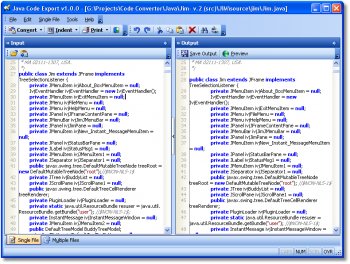


The Next Steps tab allows you to select an export method to create a resource and behavior pack to load the entity into your world. You have now entered all the information that is necessary to create the entity. If you select this option, you will not find a spawn egg in the creative inventory, instead you can summon the entity using commands. None: Do not generate a spawn egg at all.The image should be a PNG file, ideally with a resolution of 16 by 16 pixels and a transparent background.

You can create the texture in a regular image editor, such as Paint.NET or Photoshop. Custom Texture: Select a custom texture for your spawn egg icon.Colors: Use the two-color pickers to select the background and foreground colors on the default spawn egg icon.There are three ways to define the spawn egg: The spawn egg tab allows you to set the spawn egg that is the item used to spawn the custom entity. As an example, if you mix the appearance of a wolf with the behavior of a sheep (a sheep in wolf's clothing), you will quickly notice that the wolf in Minecraft does not come with a grazing animation, so it will look like the grass below them just pops off. It is recommended for beginners to use the behavior from the same mob as the appearance, to avoid conflicts.Īppearance and behavior often work hand in hand. To navigate the wizard, use the Back and Next buttons at the bottom of the screen. The wizard will guide you through the steps required to create your custom entity. Click the Let's Go-button to get started.

Alternatively, navigate to Filter and select Create Bedrock Entity to open the wizard.Click the yellow banner on the start screen to open the wizard.Once the plugin is installed, you can use the Minecraft Entity Wizard to start creating your entity.
BLOCKBENCH EXPORT JAVA INSTALL
BLOCKBENCH EXPORT JAVA MANUAL
This helped the community with the creation of 3D assets for Minecraft immensely, but there is still a lot of manual work new creators need to do before they can see their creations in-game.If you do not want to install the app, or you are using a mobile device like a tablet, you can also use the plugin in the Blockbench web app. One of these tools has seen widespread use throughout the community and even amongst the Marketplace Partner teams, and that is Blockbench. Blockbench is an open-source 3D modeling application where a creator can model, texture, and animate 3D block-based models for a variety of games. Over the years there have been several community-created tools to help streamline this process and make it easier to make content without needing to manually edit text. However, it has not always been the easiest process to pick up and learn. From understanding the geometry files to how textures unwrap to fit on the model, the learning curve can be a bit steep. This is especially true if you are a brand-new creator and are not sure what a pack manifest is, or where to put files in an Add-On pack folder structure. It's very easy to make one small typo and find out your mob isn’t showing up in the game at all. Creators have been making custom mobs for Minecraft: Bedrock Edition ever since the Add-On system was released.


 0 kommentar(er)
0 kommentar(er)
